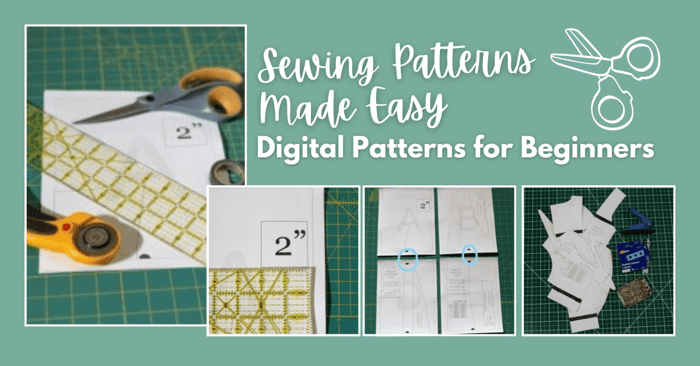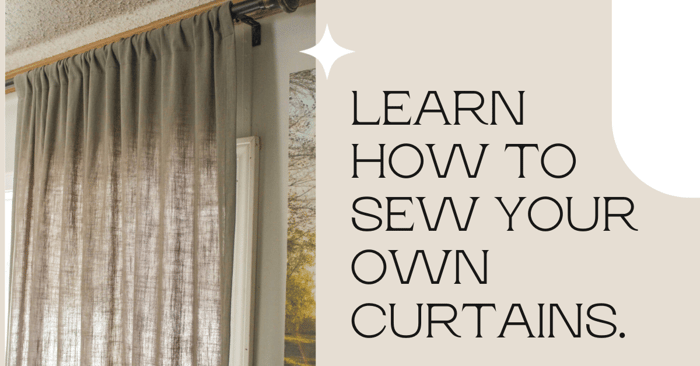Guide to Sewing with Cable Knit Fabric
Today we are going to learn about cable knit fabric. I'm certain you have probably seen the cable knit design on various items before. It is a popular design often found on garments such as hats, leg warmers, headbands, sweaters and more.
Its design is appealing to the eyes as it offers texture in the form of a braided like 3D affect that sort of pops out at the viewer visually. It is a warm, insulating, double knit fabric thanks to the knitted technique process and is soft to the skin. It can be derived from natural or synthetic fibers such as cotton, wool or polyester blends to name a few and offers elasticity (stretch).
History
Let's take a closer look at the history of knitting to get a better understanding.
The word "Knitting" is derived from the word "Knot" where fabric is created by using some yarn and knitting needles in varying sizes. The origin of knitting is thought to have come from the middle east before travelling around the world via trade routes. It was deeply rooted in middle eastern culture therefore the designs and techniques were reflective of that sentiment and passed down throughout the generations.
Fibers such as sheep wool, alpaca, angora and even plant fibers would have been spun into yarn to create clothing essentials.
The knitting machine can be dated back as far as the 1500's and was put to use more so during the industrial revolution.
During times of war, hand knitting was favored more so as a way for women to destress, stay occupied and send homemade sentiments to their loved one's afar off.
Tips
Wash by hand or on a gentle cycle using mild soaps and air dry for best results. You may dry in the dryer if desired, just know the fiber content to account for the amount of possible shrinkage if doing so. Higher cotton content = more shrinkage.
If a fiber is snagged, you can pull the strand or strands back through to the backside and tie them off and it'll look as good as new!
Iron on the wool setting if pressing is needed.
Projects
There are a lot of sewing projects that work and look great with cable knit fabric. Here are a few of my favorites:
- Blankets
- Cardigans
- Dresses
- Hats and headbands
- Leg warmers
- Mittens
- Sweaters
- Scarves
- Socks
Any project you choose to use this with will automatically look stunning with little effort thanks to the unique look!
Let's sew something now using our cable knit fabric.
Supplies
- Cable knit fabric.
- Portland cocoon cardigan from peek-a-boo pattern shop
- Sewing machine, thread, needle, scissors, clips or pins.
Always wash and dry your fabric before taking it to your cutting table.
Next, measure yourself or whomever you would like to make the cardigan for to get the approximate yardage of fabric needed according to the chart in the pattern. Cut out the pattern pieces based on your measurements and gather your supplies.

Now it's time to sew! This pattern calls for a 1/4" seam allowance.
Step One: Shoulder and sleeve construction
Place the front and back cardigan pieces right sides together at the shoulder seams. Clip or pin in place and sew.

Take your sleeves and lay them on the upper edge of the arm right sides together. The widest edge of the sleeve is what we will be sewing to the cardigan. Clip or pin in place and sew.

Next, we will sew the front and back together beginning from the edge of the sleeve down the side seam. Clip or pin in place and sew.

Step Two: Cuffs
Take the two cuff pieces and fold them over with right sides together as shown and clip or pin in place. Sew the sides.

Now, fold the cuffs in half with wrong sides together and slide the cuff onto the sleeve edge with right sides together and raw edges aligned.
*I like to sew my cuffs placed inside of the garment. The pattern shows it placed on the outside. Either works ok.

Cuffs are sewn on. Next, we will add our band to complete the cardigan.

Step Three: Band
Grab the two band pieces and place them right sides together, lining up the raw edges of the short ends. Clip or pin in place and sew together.

The band should now be a continuous loop, and we will fold it onto itself with wrong sides together so that the seams are enclosed.

To finish our cardigan, we will place the folded band onto the cardigan, lining up the raw edges. Place one seam at the top in the middle of the neck and the other seam down at the bottom middle. The notches on the sides should line up with one another. Clip or pin the band and cardigan together as shown and sew the raw edges, gently stretching around the neck area only.

The Portland cocoon cardigan is now complete! If you would like to topstitch the band, you may.

I really like how quickly this cardigan comes together and how well it goes with so many different articles of clothing. I have far too many cardigans in my closet and the Portland cocoon exceeds them all. I love that it can be made with long or short sleeves too making it a year-round clothing staple.
The cable knit fabric detail adds a little extra something special to this make that gives a sense of vintage vibes. It is easy to work and sew with too and the entire cardigan was made out of it proving that there is enough elasticity in the fibers for stretching in areas like the cuffs and band for example that typically would require ribbing in certain patterns.
So, we learned that cable knit offers some interesting details that are created through different knitting processes that can be traced back quite far and has been passed down throughout the generations. It offers warmth and softness to the body and is visually appealing especially if you appreciate vintage flare.
It's easy to work with and if the fibers happen to be snagged at some point, it can typically be corrected by pulling the fibers back through to the underside.
Have you worked with cable knit fabric before? Ready to give it a try? I hope you will!



